OddCameras.com
Linhof Standard Präzisionskamera
The Linhof cameras are a reknown standard for professional large
format photographers. The most well known are the Technikas, but there
was also the Standard, its sister model wihout back movements.
Basically they are field cameras with a drop bed, like the Graflexes
and others, but the Technikas have additional back movements close to
a monorail camera. Linhof also made smaller models from both lines
which, like the smaller Graflexes, could be used as press cameras.
The Technika series was presented in 1934 with a show model, based on
the existing Standard model and production began. They improved the Technika and the improvements were available
for both variants, most probably somewhen in 1936. Anyway, they are both in the
1937 catalogue. The improved Standard is known as Standard II (there is no Technika II). Both are 9x12 cameras,
not 4x5 yet, there were 6.5x9, 10x15 (4x6) and 5x7 models. On both the
back could be turned from landscape to portrait, both have triple
extension and the front can be tilted, big advantages compared to
cameras from competitors like Graflex.
The Technika has the reknown back movements and a hinged ground
glass back in addition. On the Standard II only the hood is hinged.
The size of the Standard folded is roughly 15 x 15 x 6.7 cm, a very
compact camera, smaller than a Graflex. It weighs 1.5 kg without a
lens. The Technika is only 0.5 cm thicker and weighs only 200 gr
more, so they are on the light side, not on the heavy, as they were
later.
The camera presented is most probably a Standard, it's not a Standard II yet. It resembles very much to the Standard II in the 1937 catalogue, but there are 2 differences: the hood is not hinged and there are 2 pins on the bottom of the front standard to pull it out of the housing, whereas the II has a little handle.
The serial number is 13171. The Linhof factory was erased by bombs just before the end of the war, no archives whatever were left. So there is no precise information. According to information gathered by collectors, the 13000 numers started in 1936. This would make my camera a very late pre-II model.
The 15cm standard lens dates from 1923, the tele lens from 1931. Both are in big shutters, too big to be fitted the ordinary way into the lens board. They are probably re-used from other cameras. Already in those days camera dealers sold old lenses. The wide angle is from 1936, the year of the camera. The camera bed has stops for 90, 135 and 150mm. These were made by the Linhof factory, if you or your camera dealer sent them the lenses. So most probably the camera dates from 1936.
Some photos:
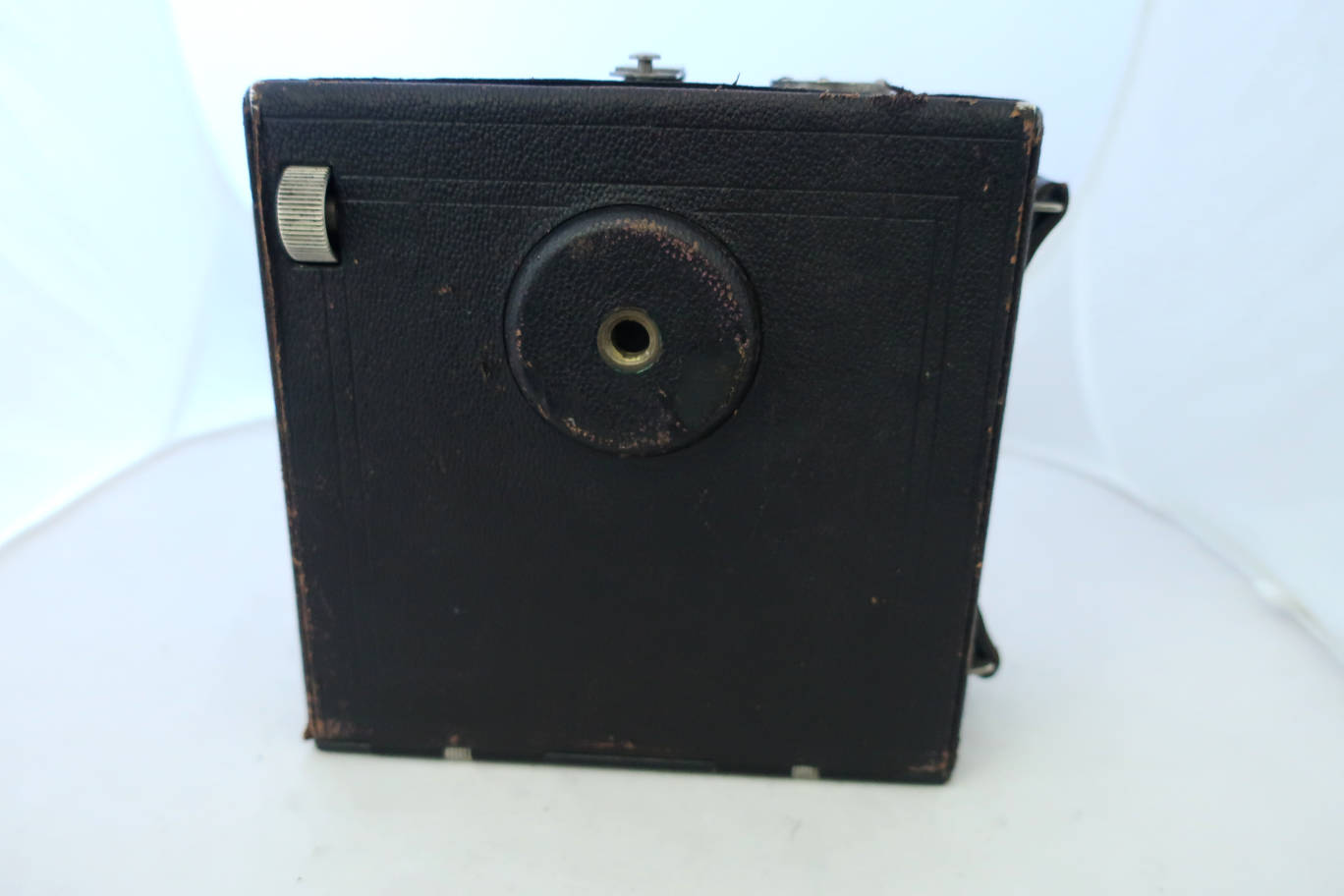
Camera closed. Front, drop bed with tripod socket.
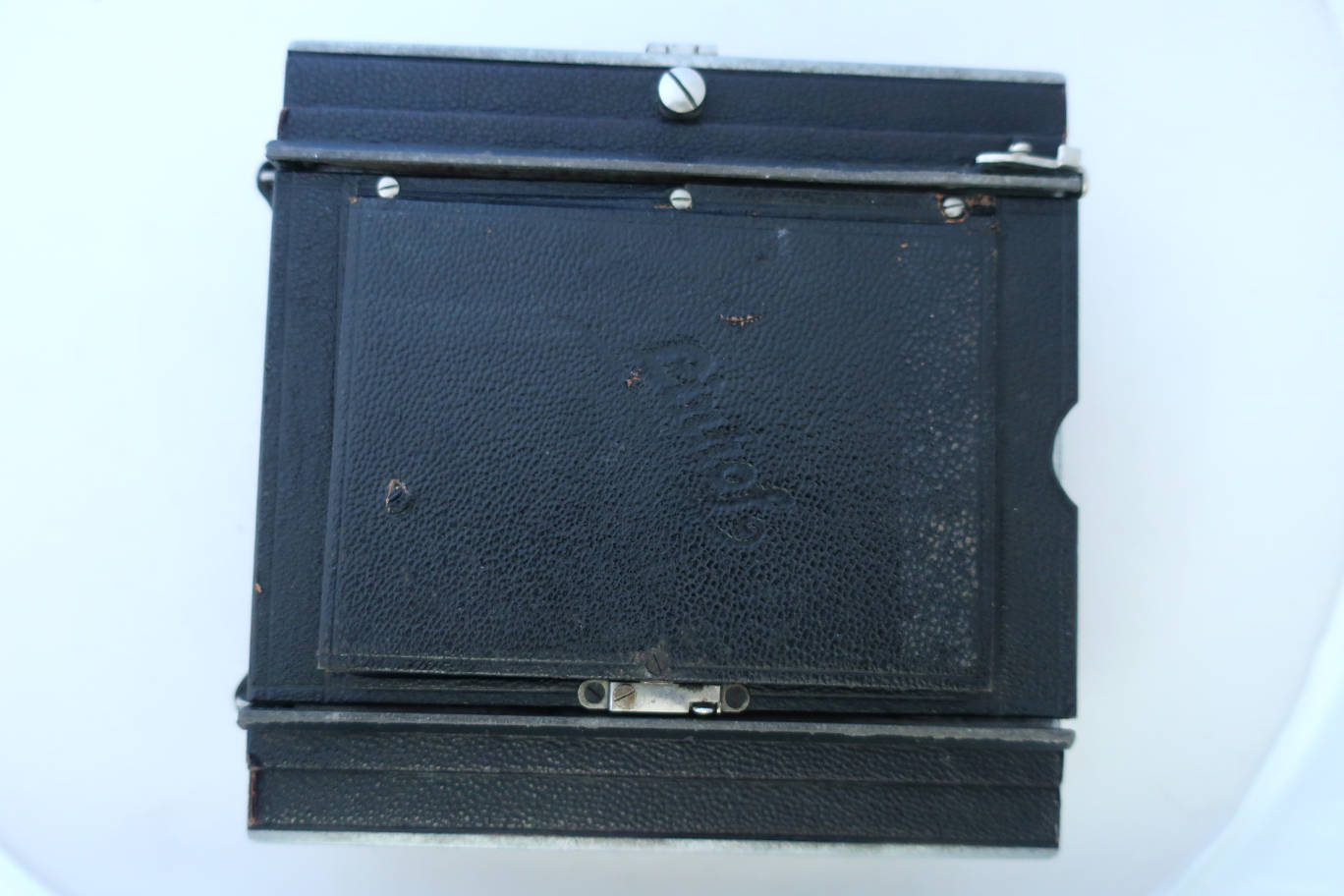
Camera back with hood.
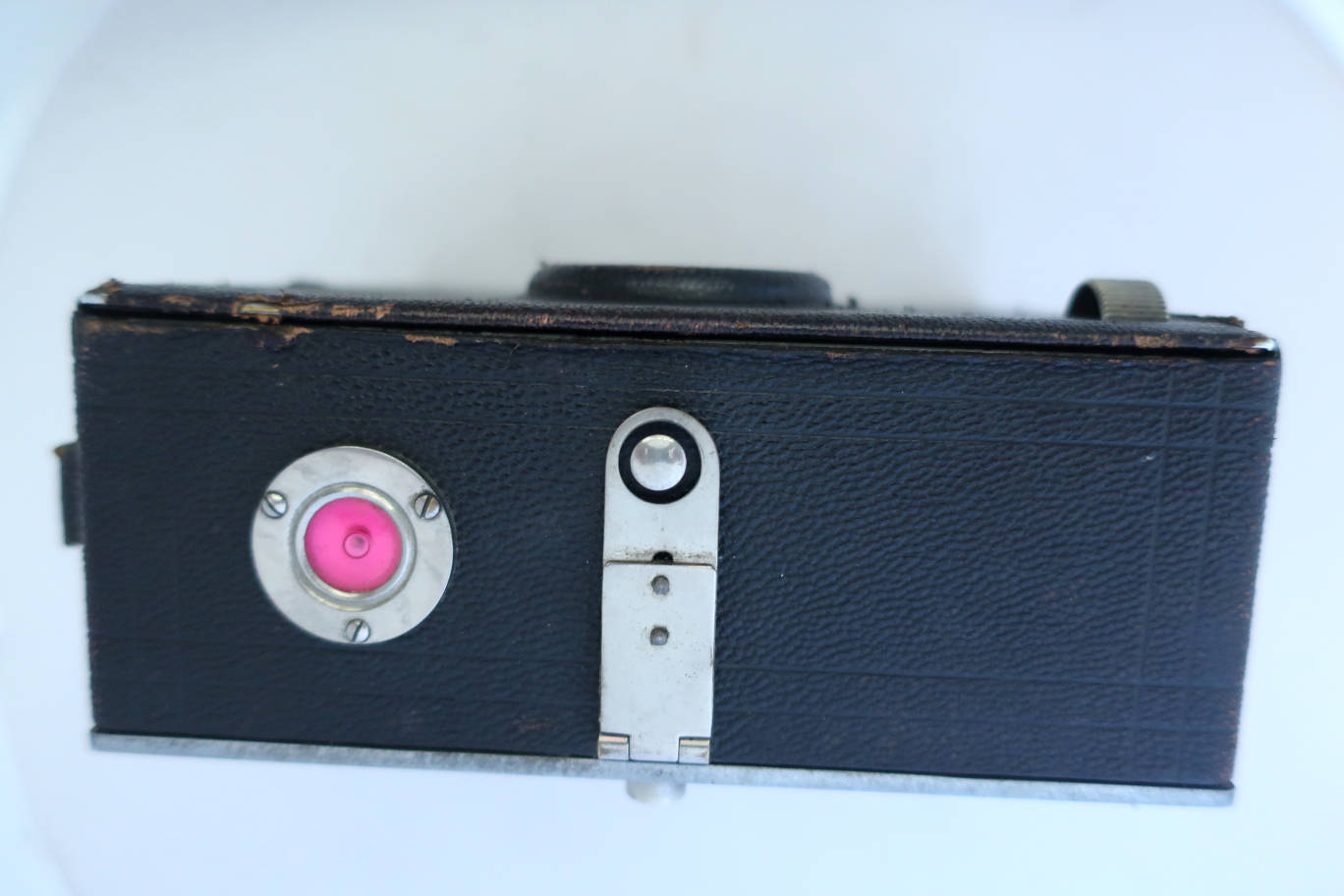
Camera top with bubble level. In the eye-hole of the foldable finder: push button to open the camera.
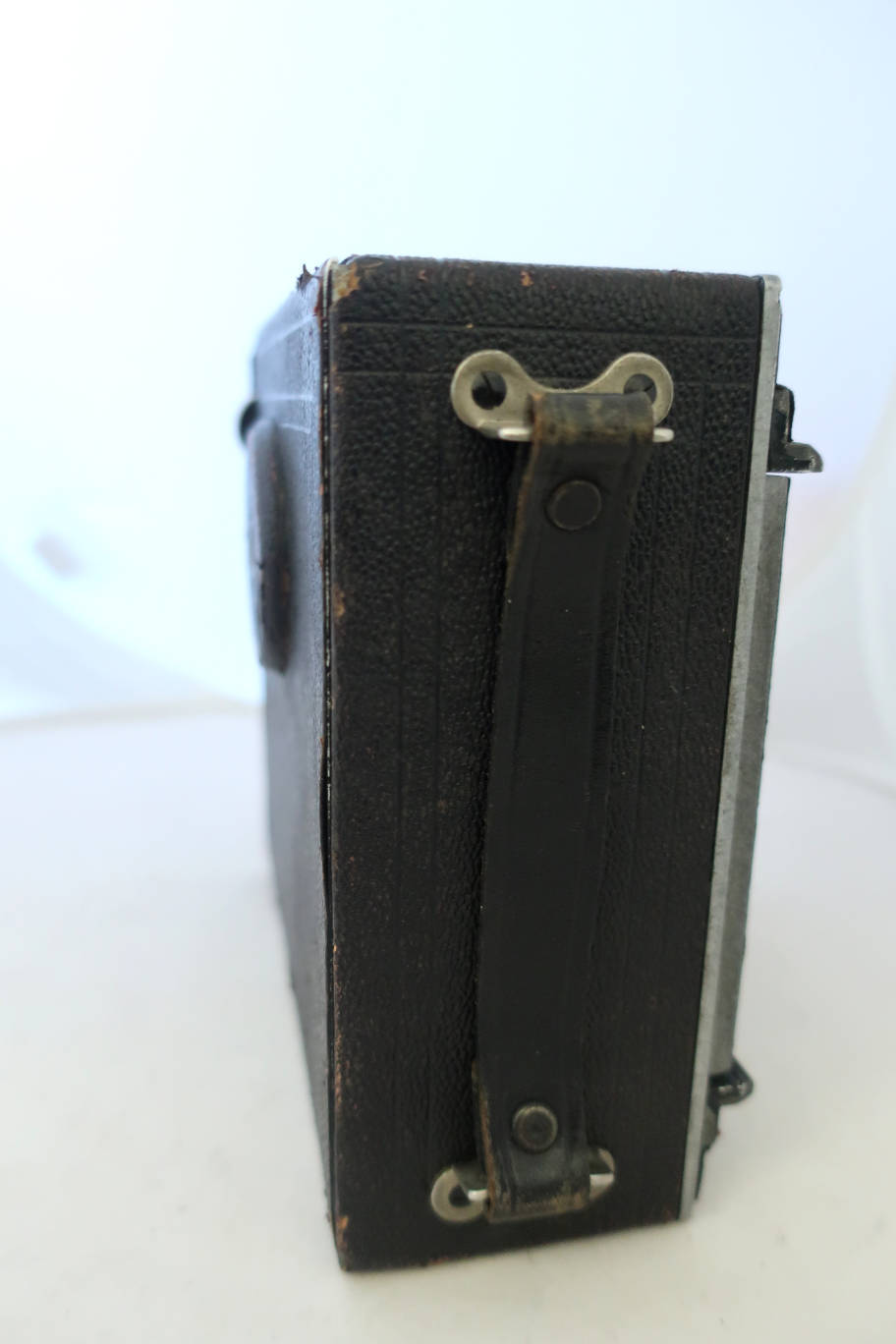
Right side. Handle.
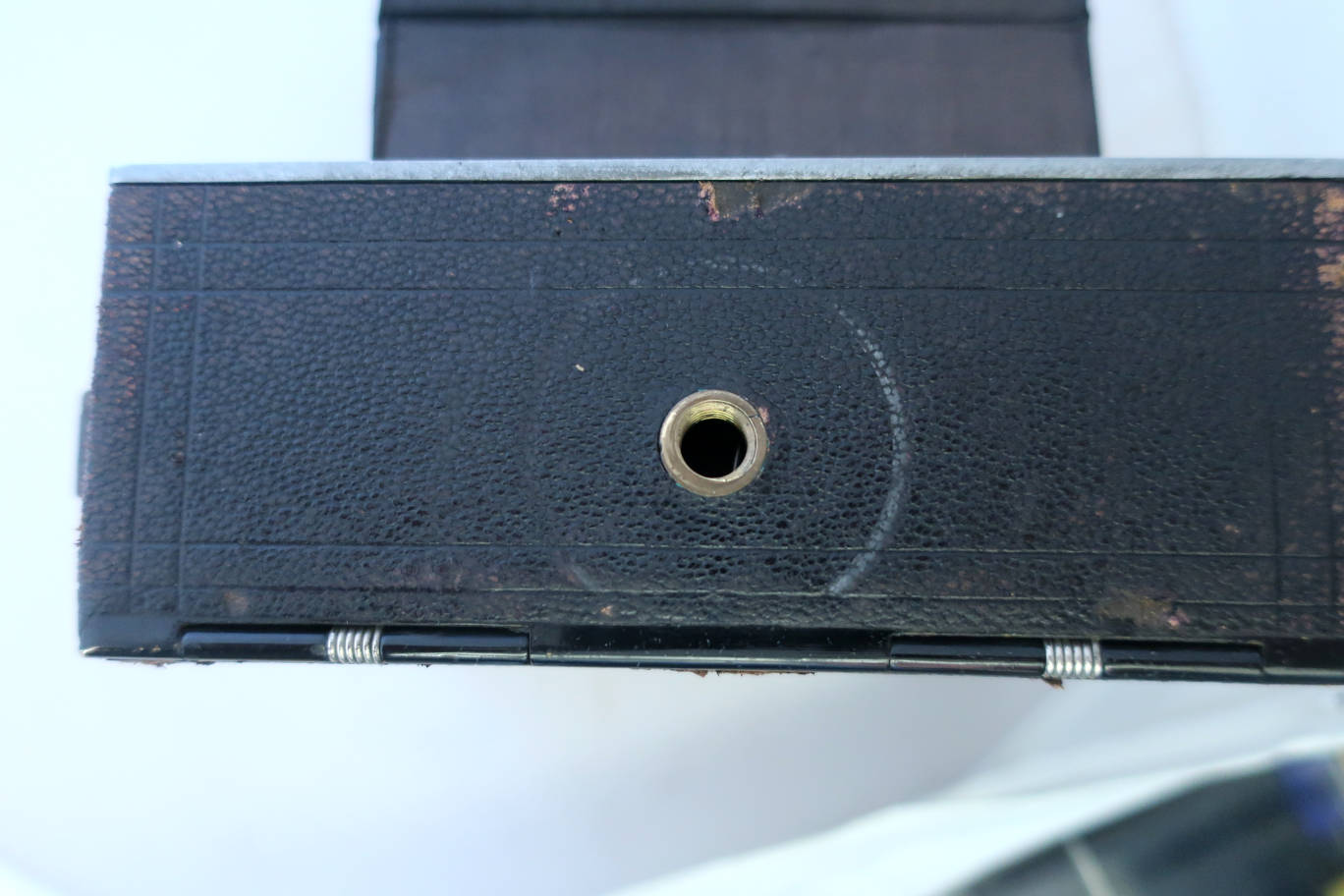
Bottom. Another tripod socket.
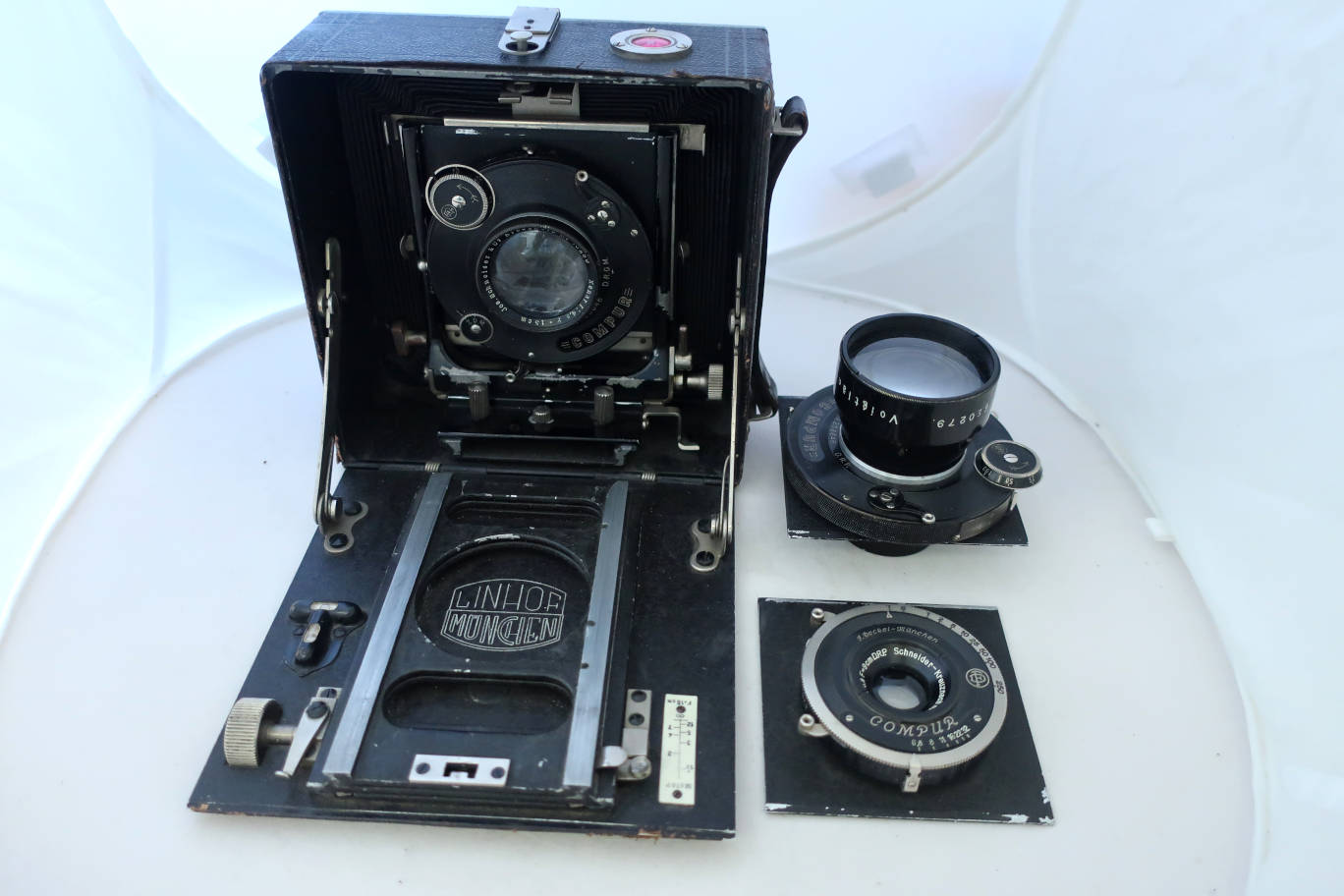
Camera open. A nice set with 3 lenses. Note the 3 stop notches in the bed rail for 90, 135 and 150mm.
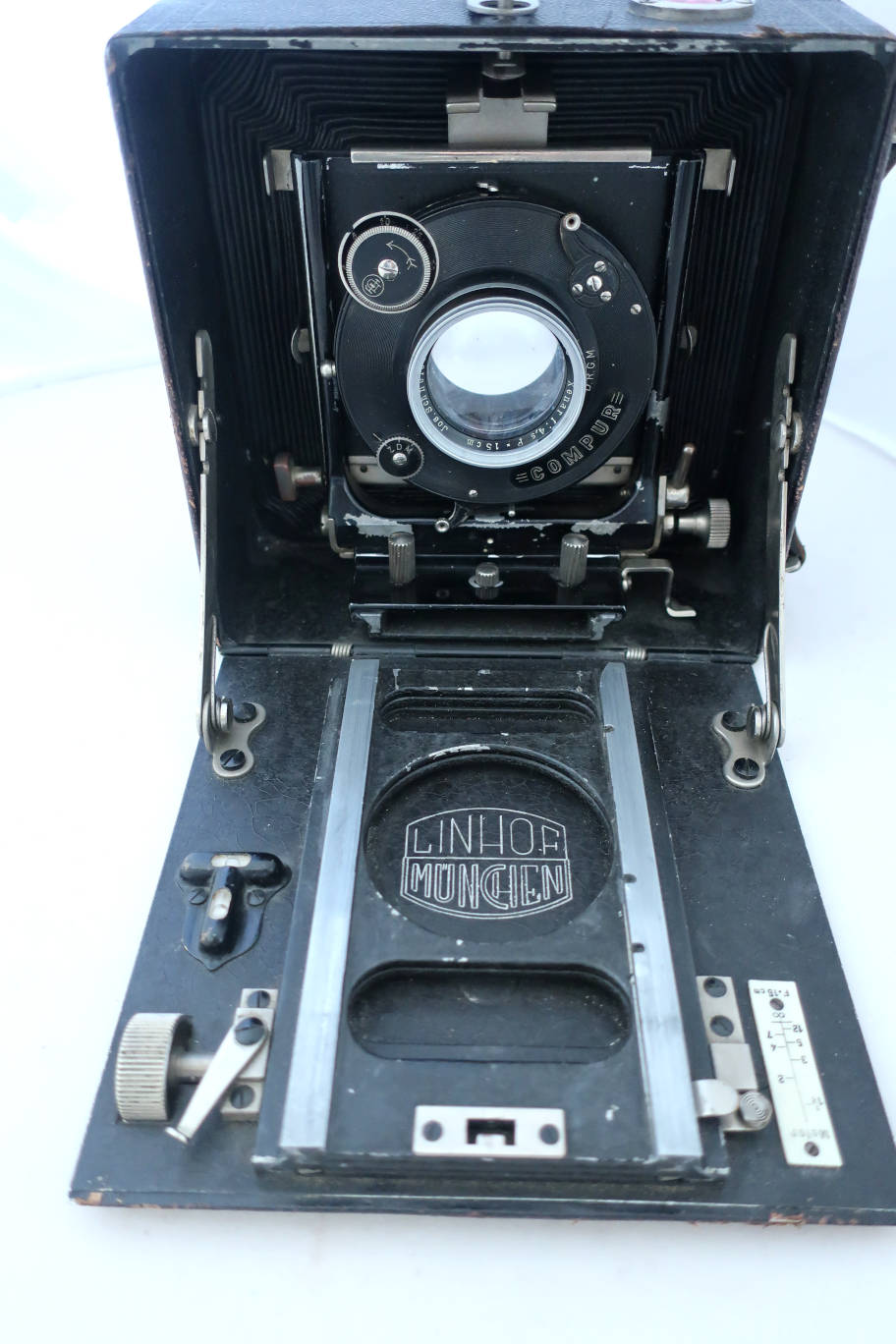
Camera open, lever of the bed advance in stop position. The Linhof logo is a more modern one, but still different from the after-war logo which is close to it.
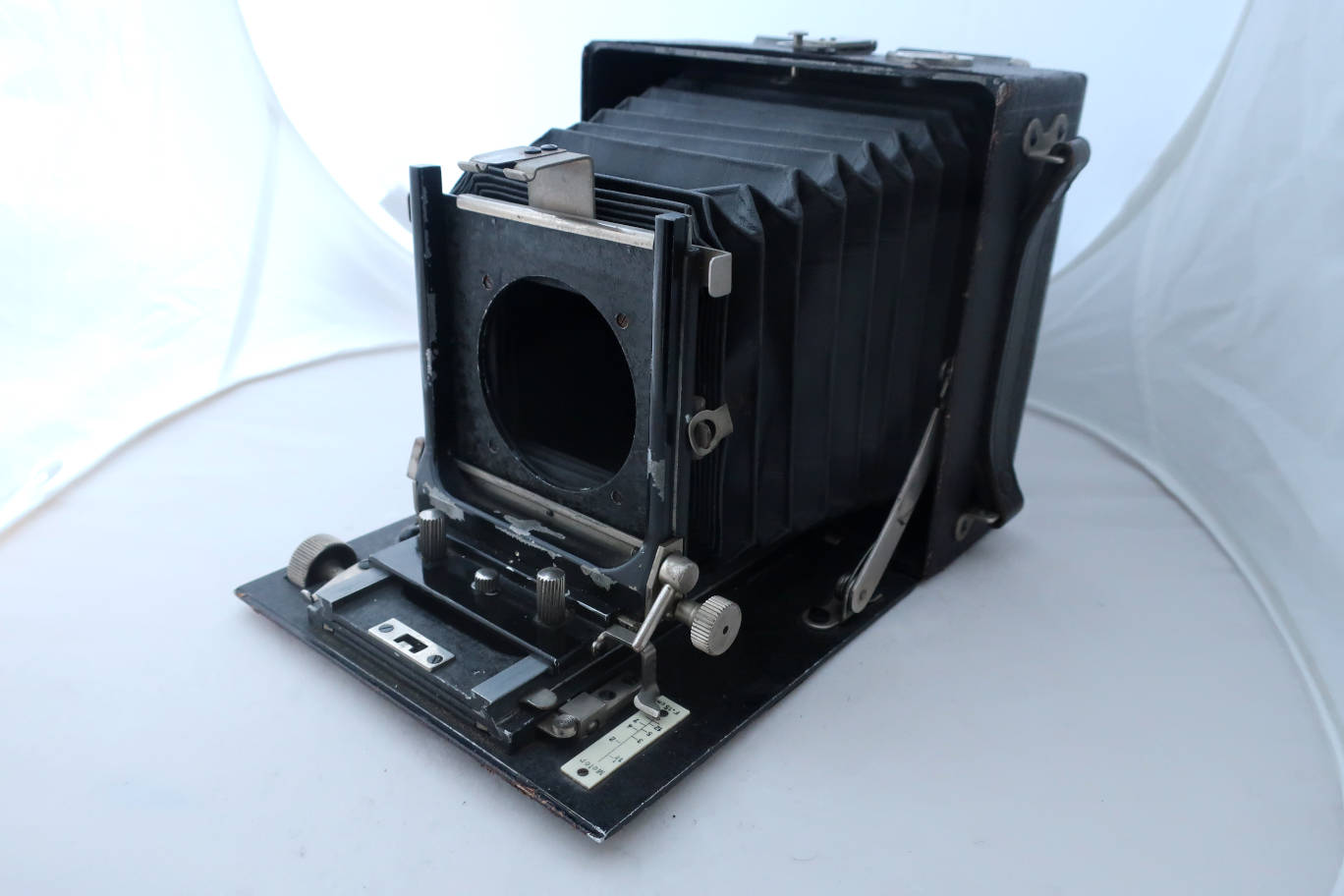
Camera open. It lacks the wire finder frame. On the front of the bed, next to the scale, there are 2 tabs. The lower one releases the first (geared) extension, the upper one releases the second extension which has to be pulled manually. The knurled knob on the front standard moves the shift, the one with the pin releases and fastens the tilt.
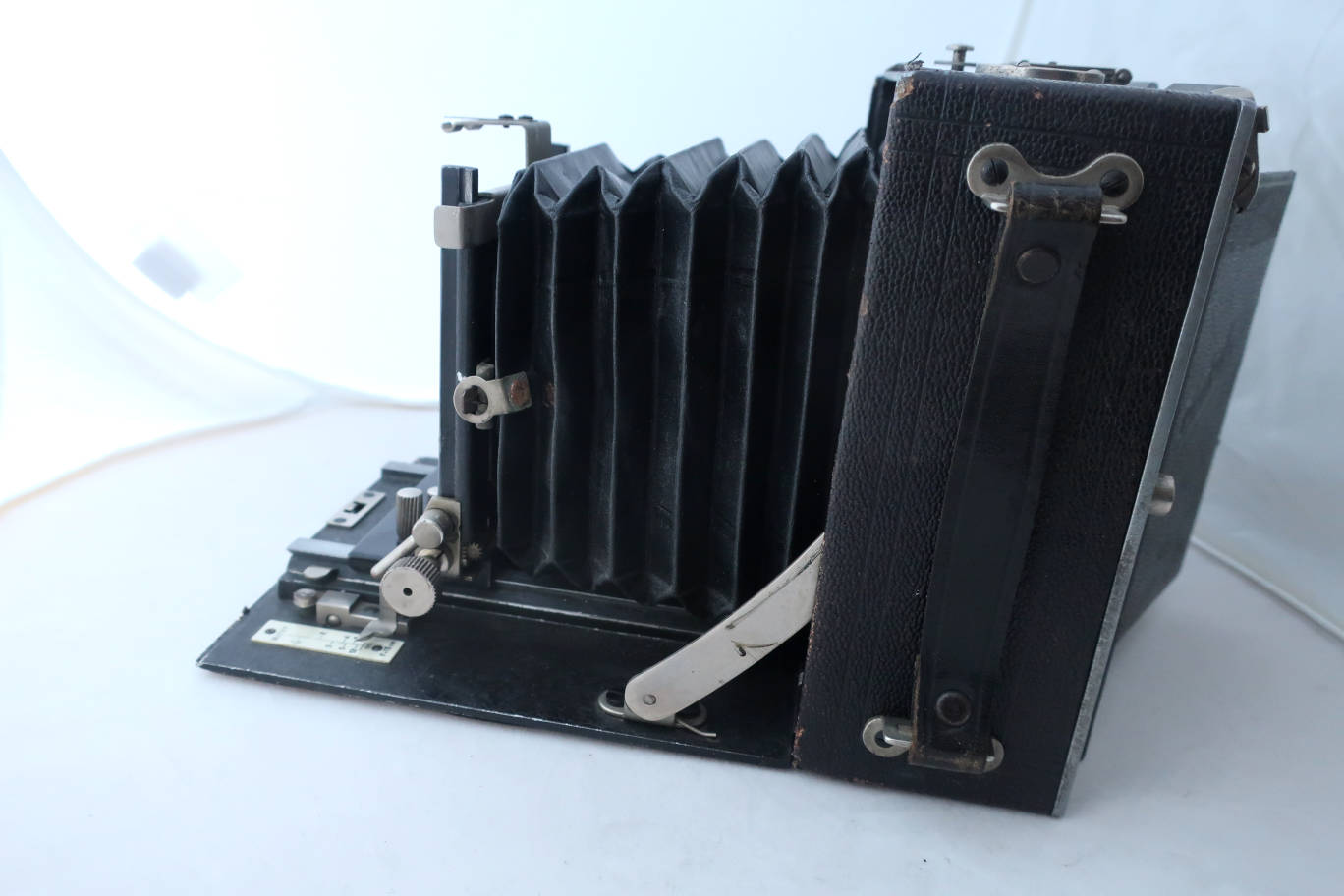
Seen from the right.
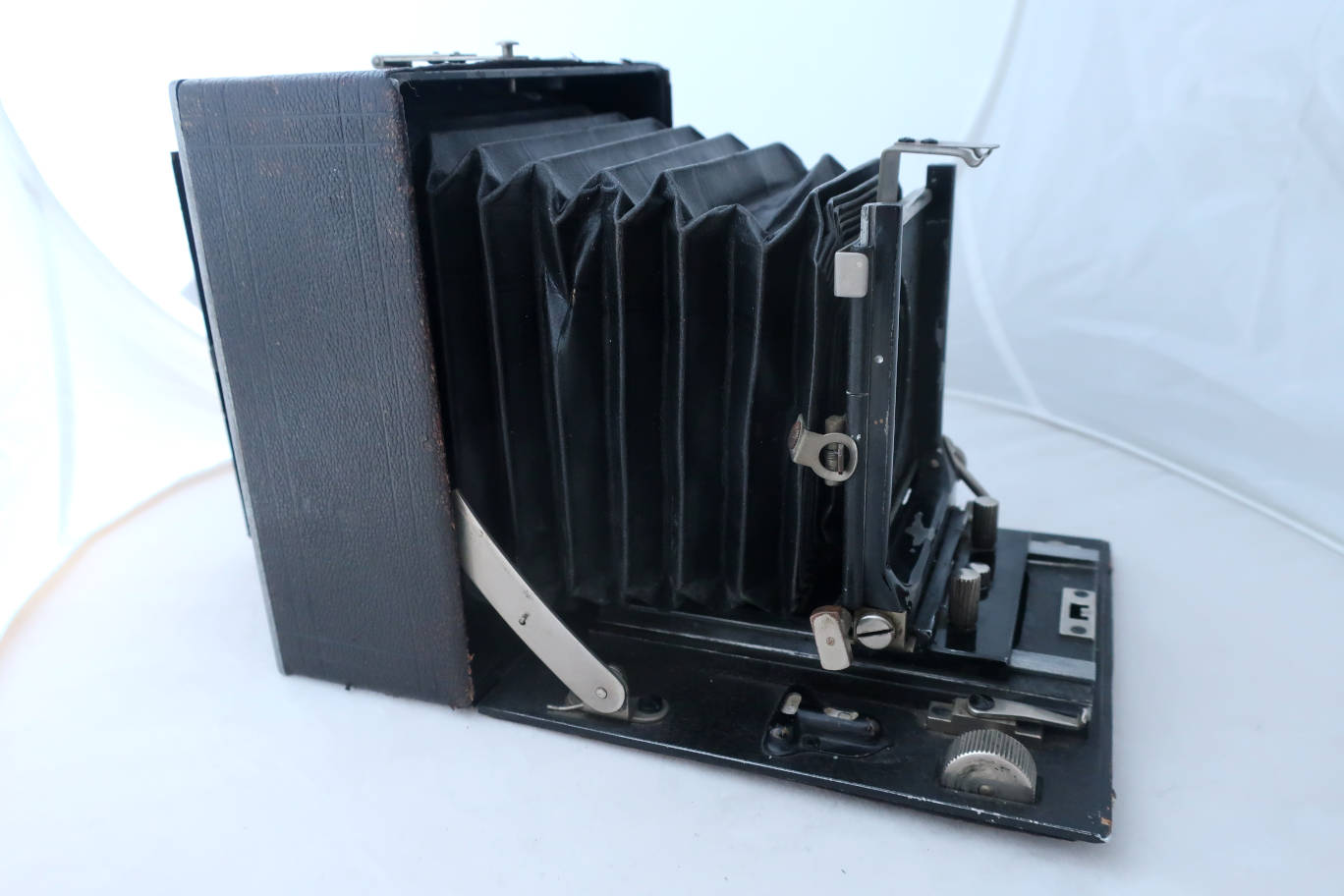
Left side. 2
bubble levels on the bed. The focussing knob can easily be blocked via the
lever. The flatened knob on the front standard moves rise and fall.
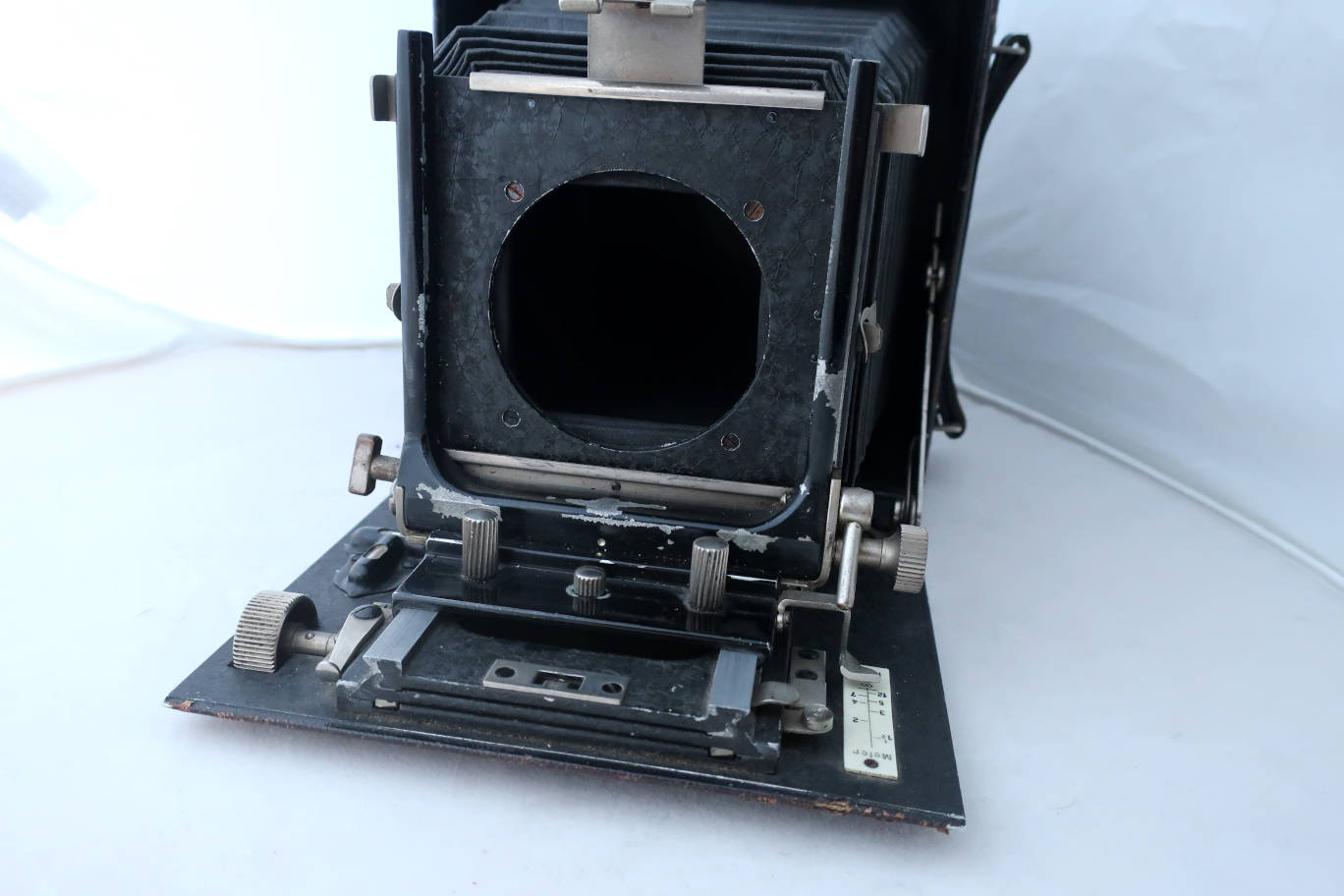
Front. Lensboards are standard 3 1/2 inch size square (89mm). Note that lens is not centered, it sits nearer to the bottom. The bar to the right and left near the top of the front standard releases/fastens the lens boards, by pushing it to the right or left, it slides like a Graflok slider. The little knob between the 2 pins to move the lens board releases the bed stops.
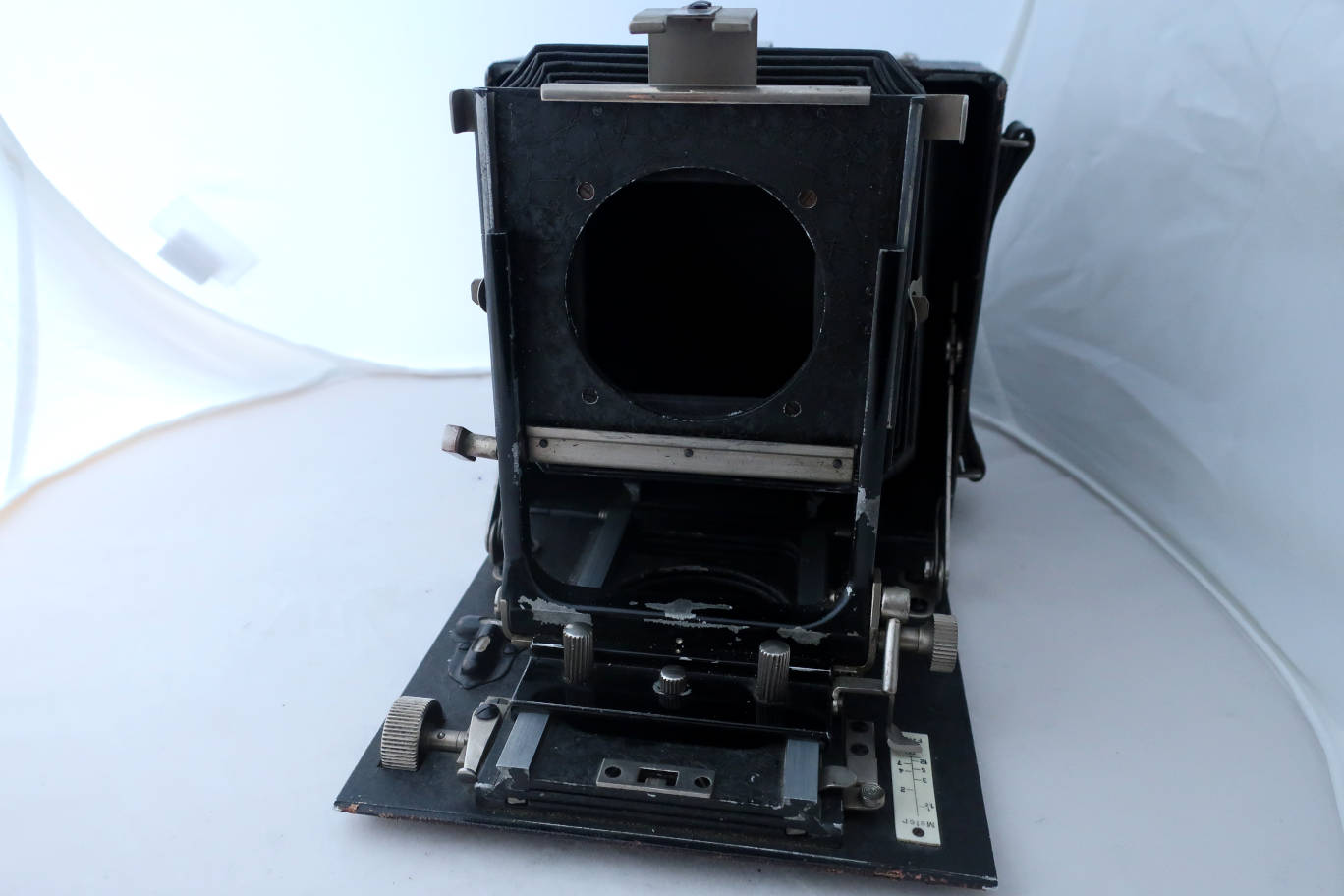
Front rise.
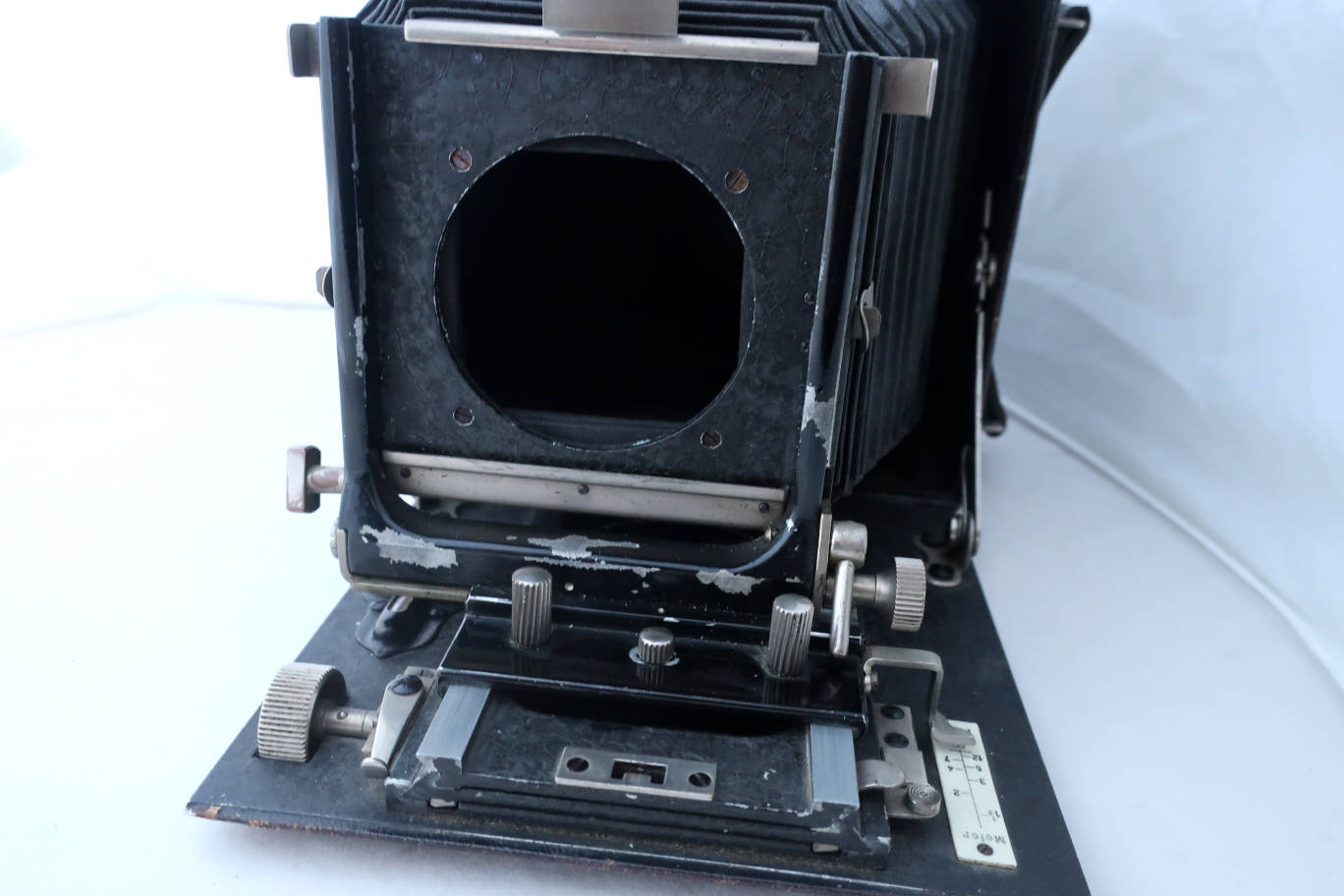
Front shift..

Front tilt.
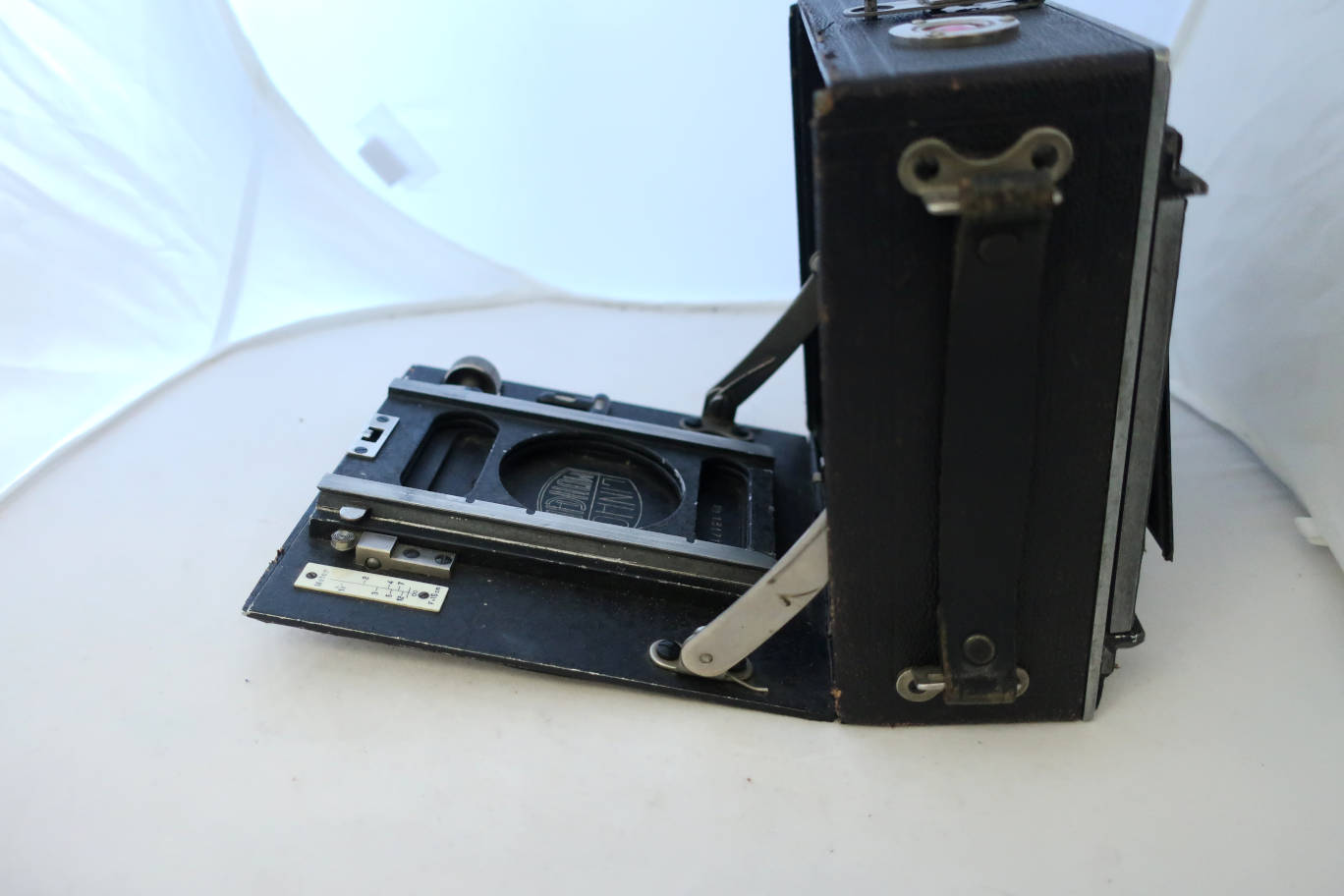
Bed rise,
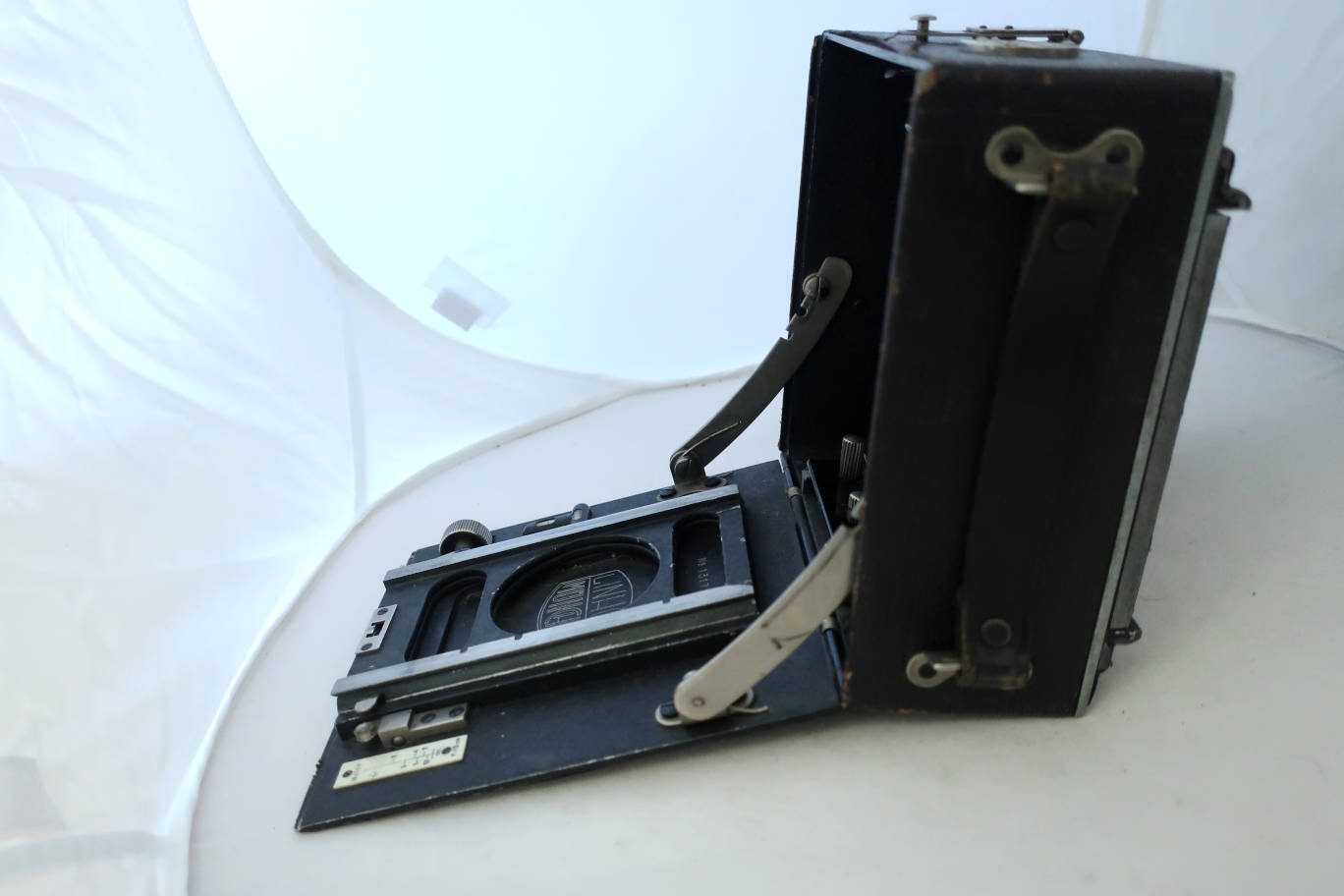
Bed drop.
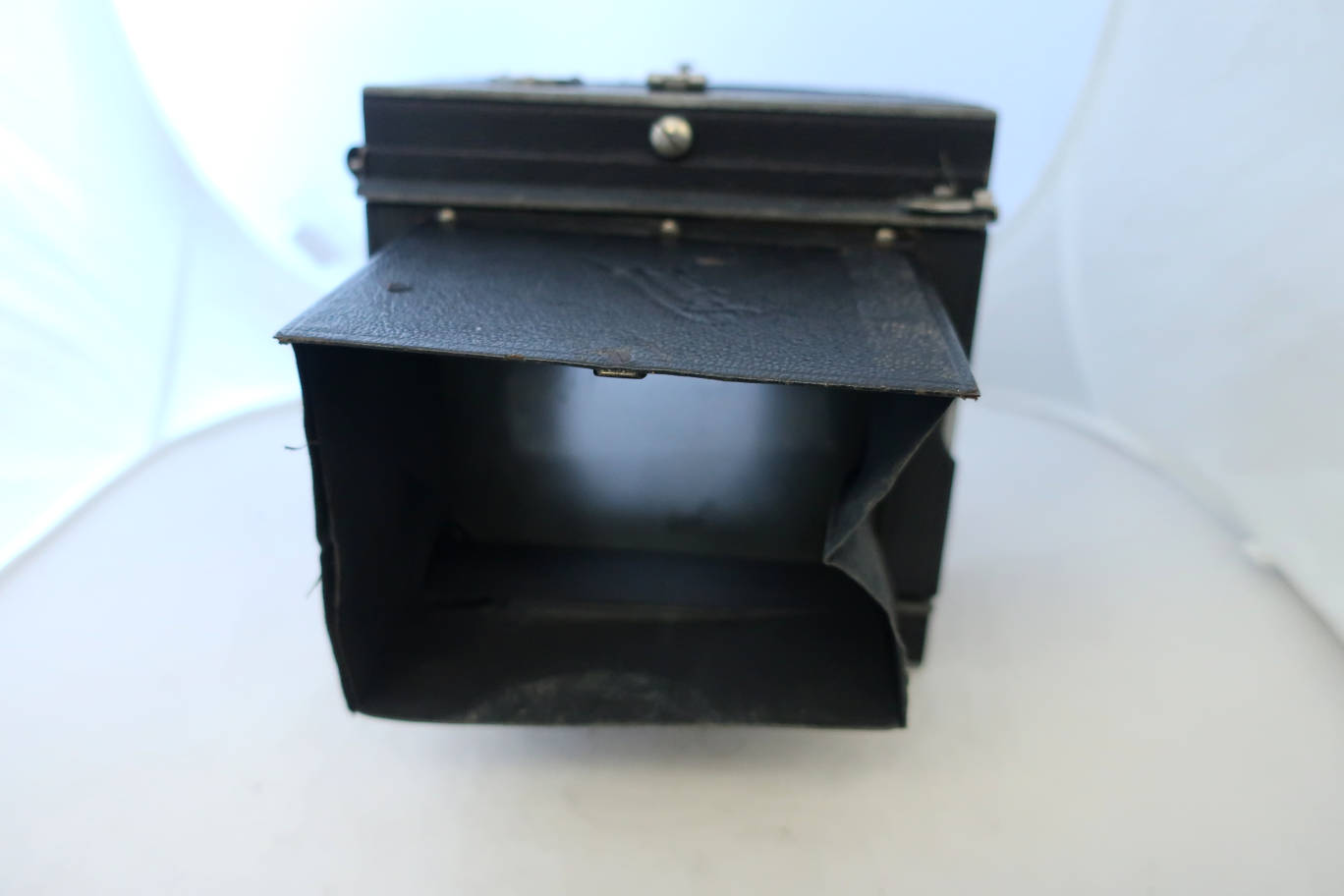
Hood open. The back can easily be turned from landscape to portrait format with no
restrictions. The ground glass has to be swapped against a film holder. The hood of the Standard II is hinged for easier access with a loupe. On the Technika the
whole ground glass is hinged so that you can put a holder without removing it.
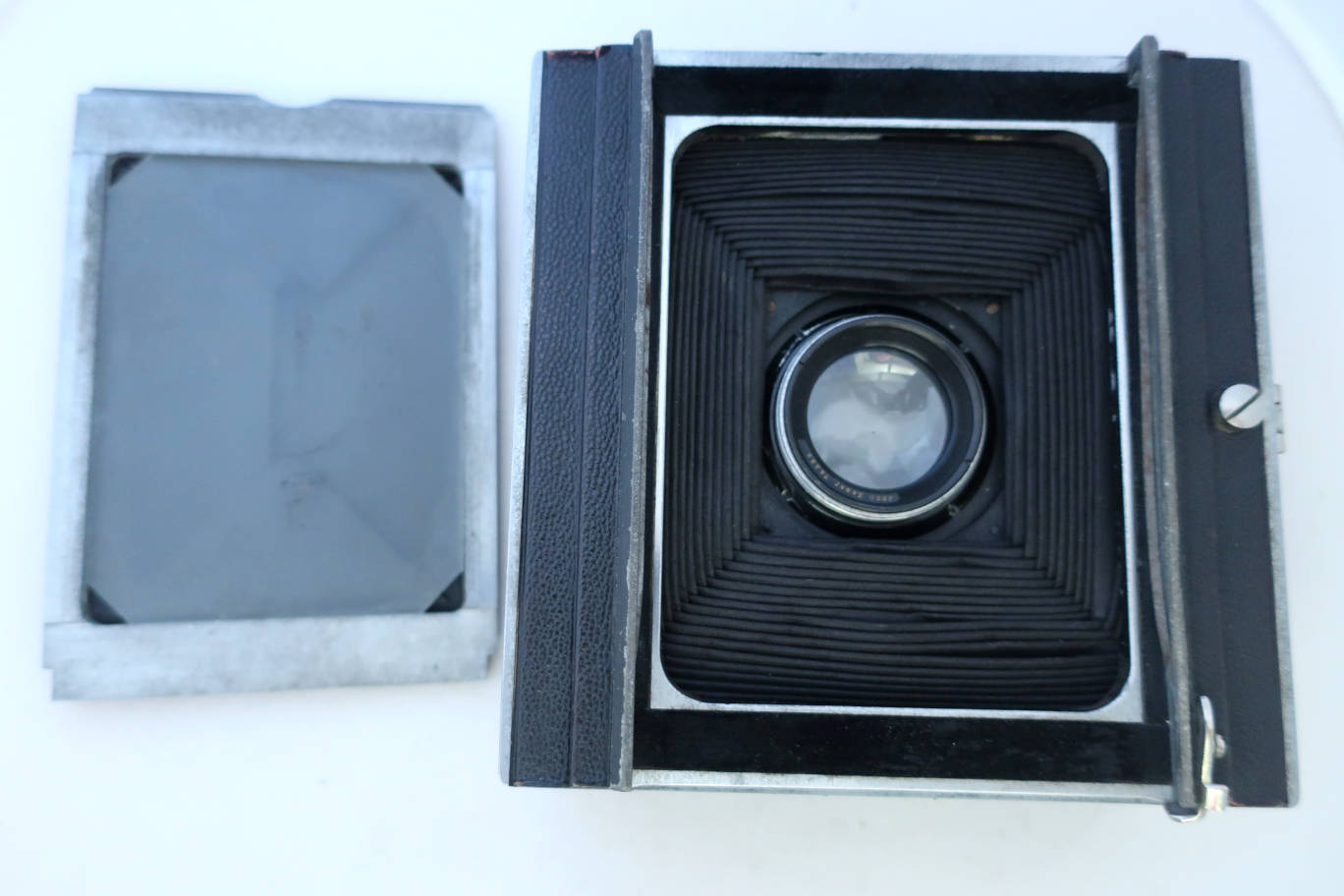
Ground glass deposed.

With a roll film holder in portrait mode.
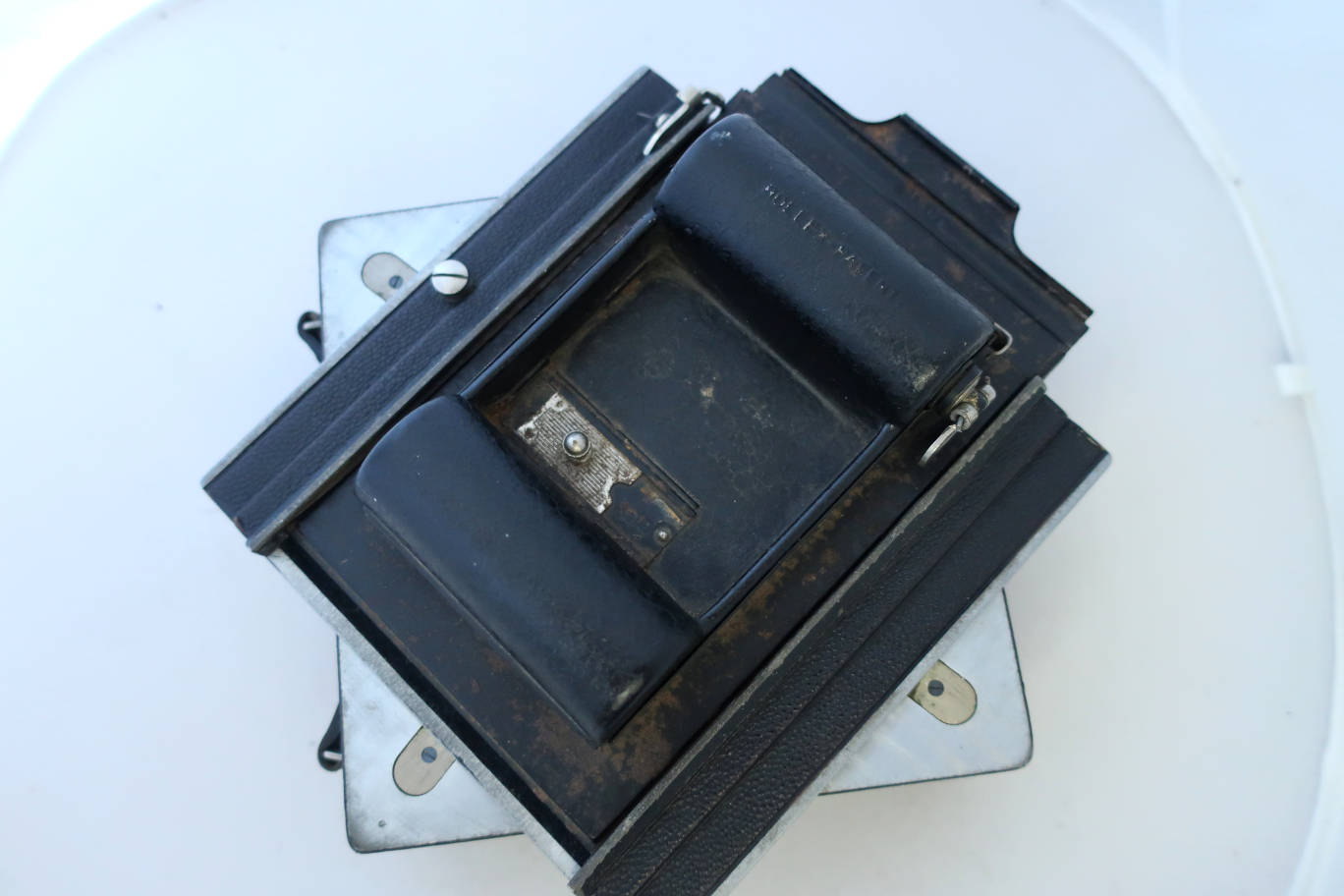
Turning the back.
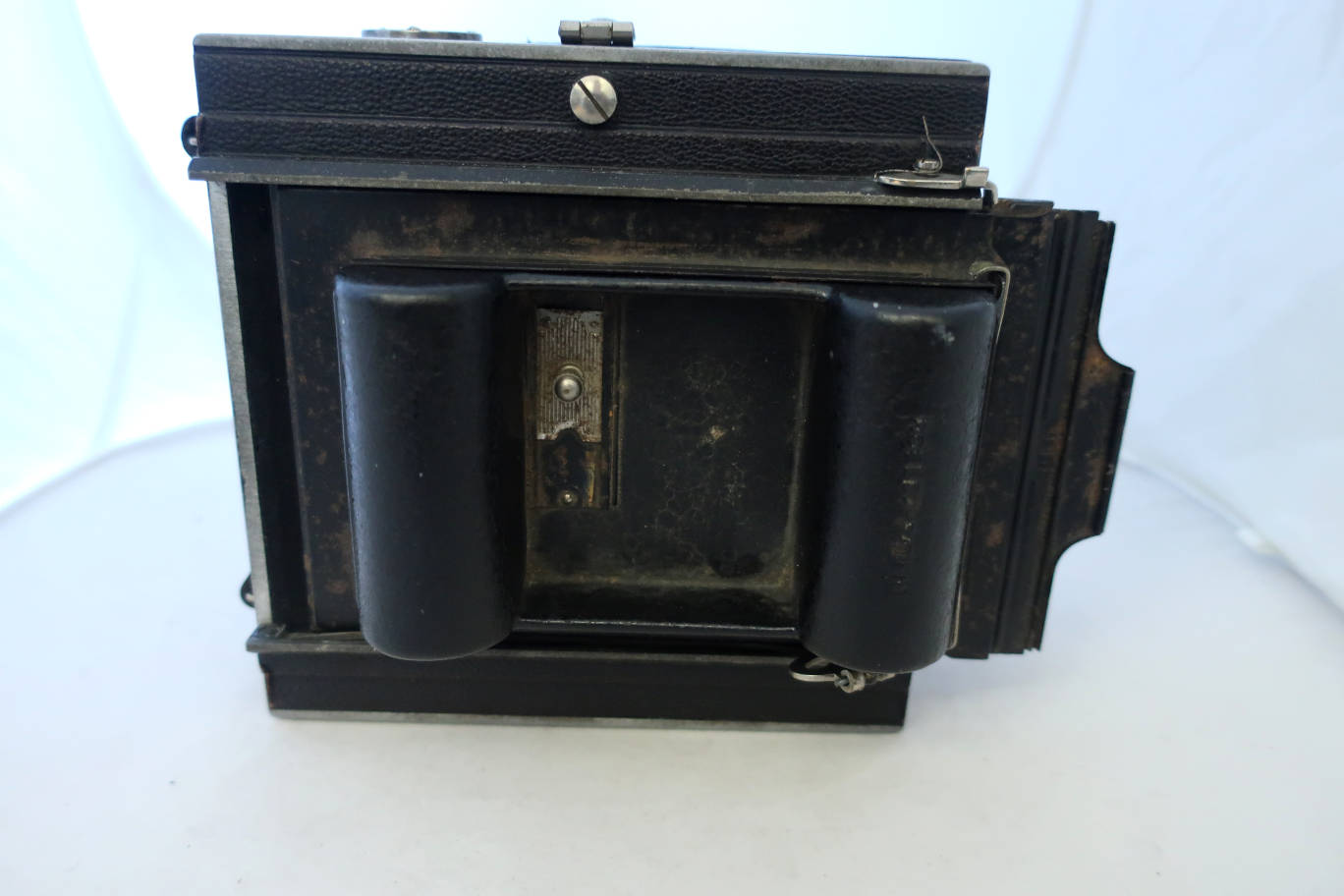
In landscape mode. Linhof had its own film holders with a different offset. As you can see in the photo, a 9x12 standard back does not slide in completely. So either you live with the offset or you clip the edges of your holders. If you clip your holders, they may slide in too far on other cameras. And pay attention to light leaks on the clipped edges.
The lenses:
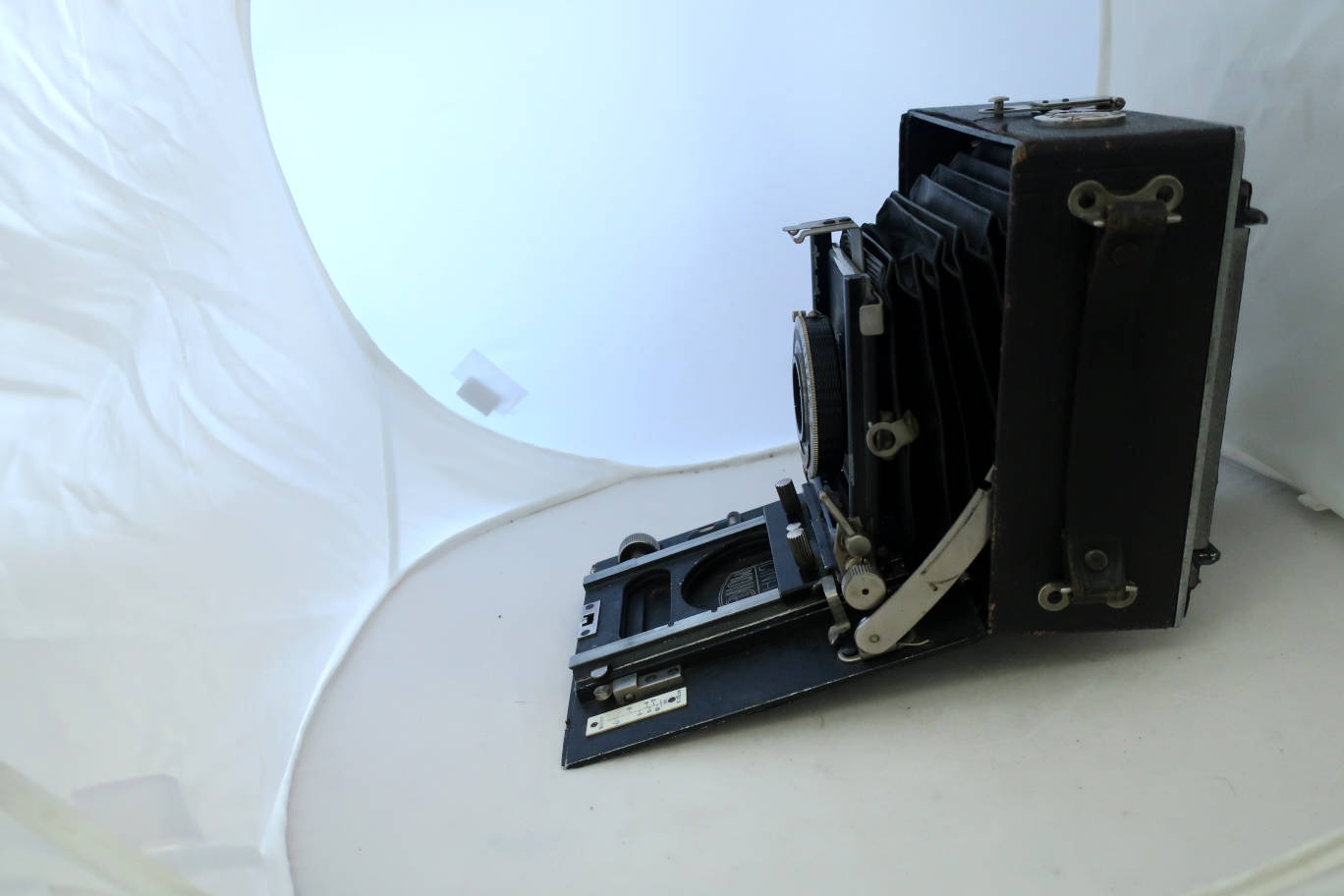
Extended to the 90mm stop. Bed dropped and front standard tilted for parallelism-

Seen from front.

With a Schneider Kreuznach Angulon
1:6.8/9 cm wide angle lens. The lens number indicates a spring 1936 production date.
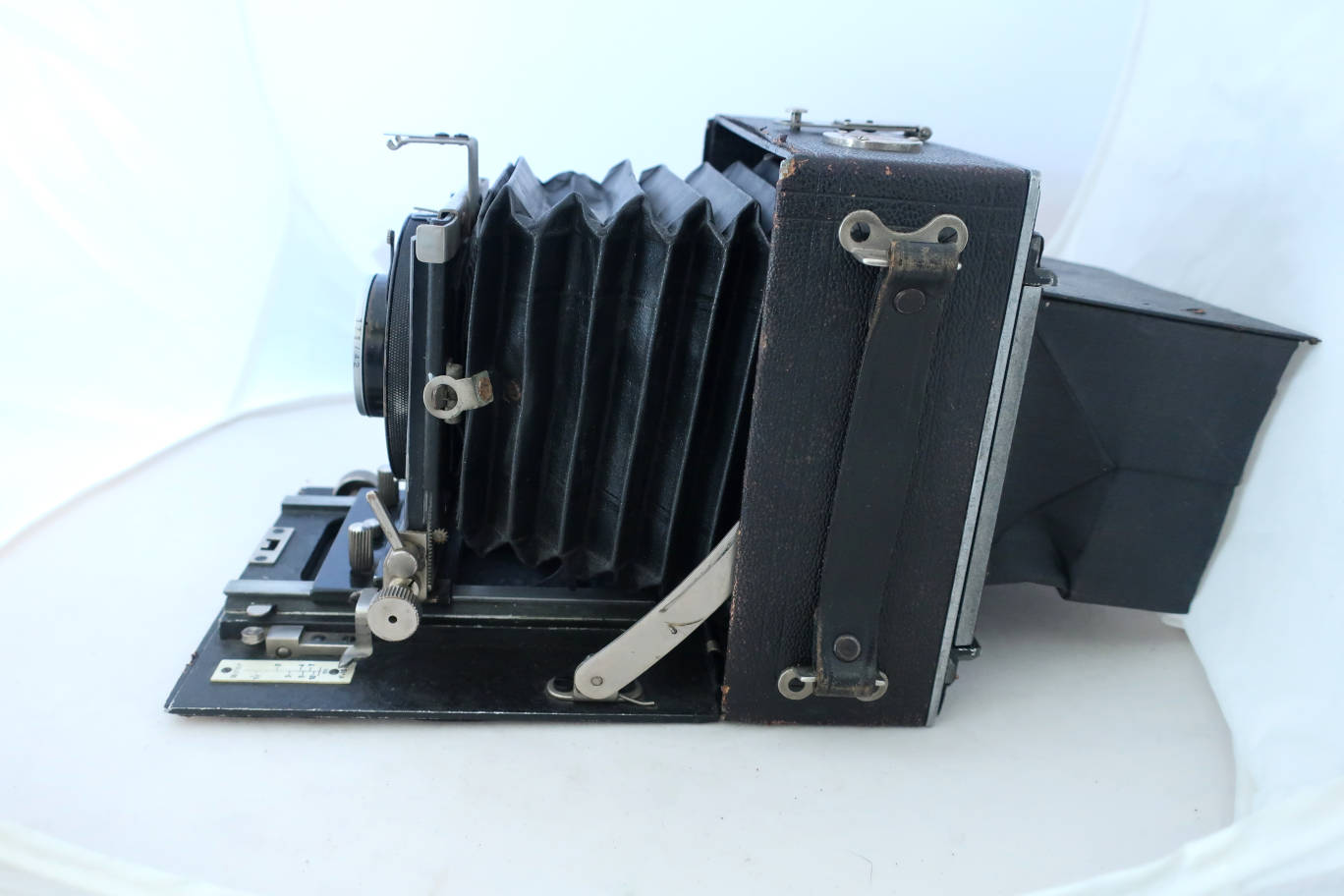
Extended to 150mm.
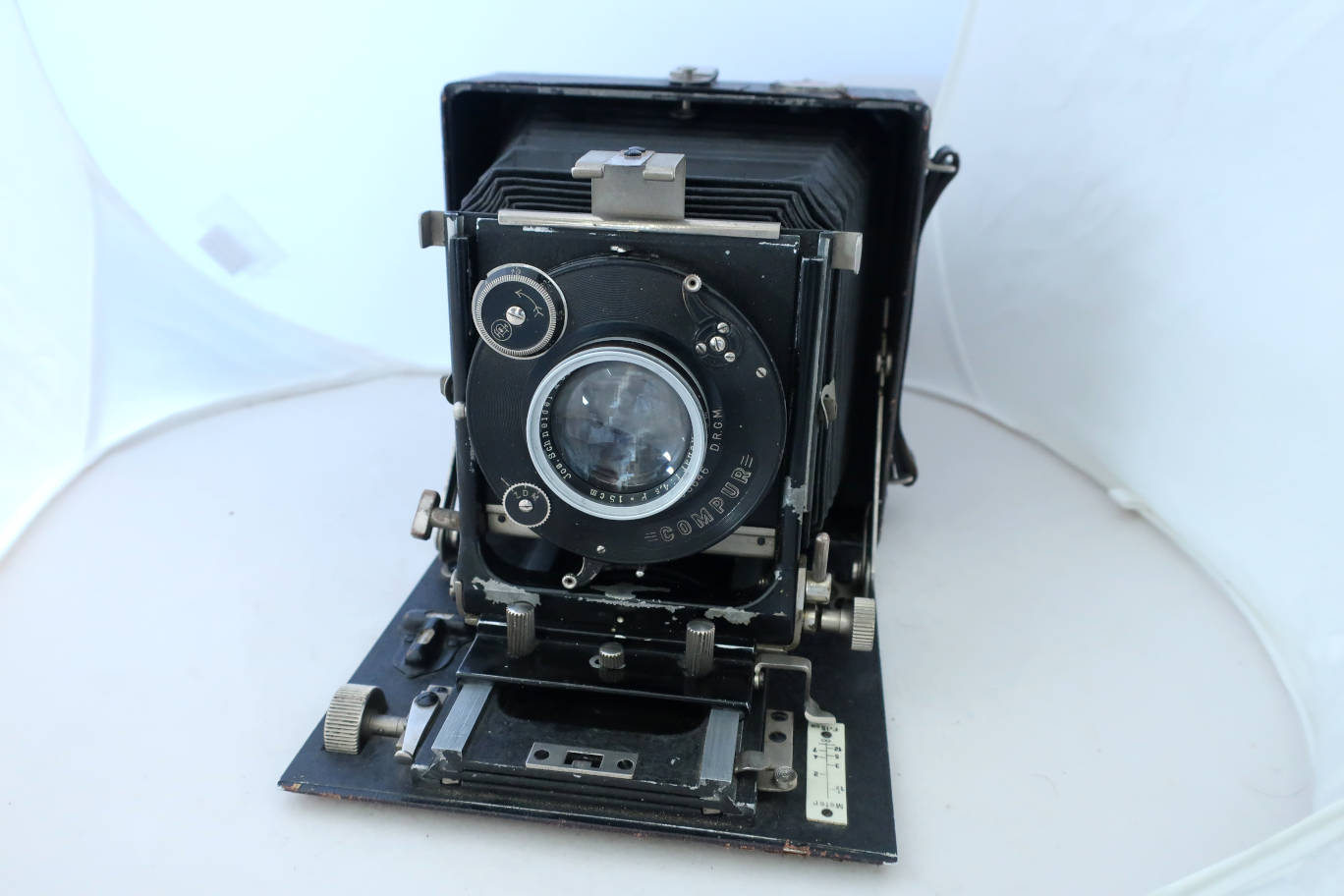
Seen from the front.
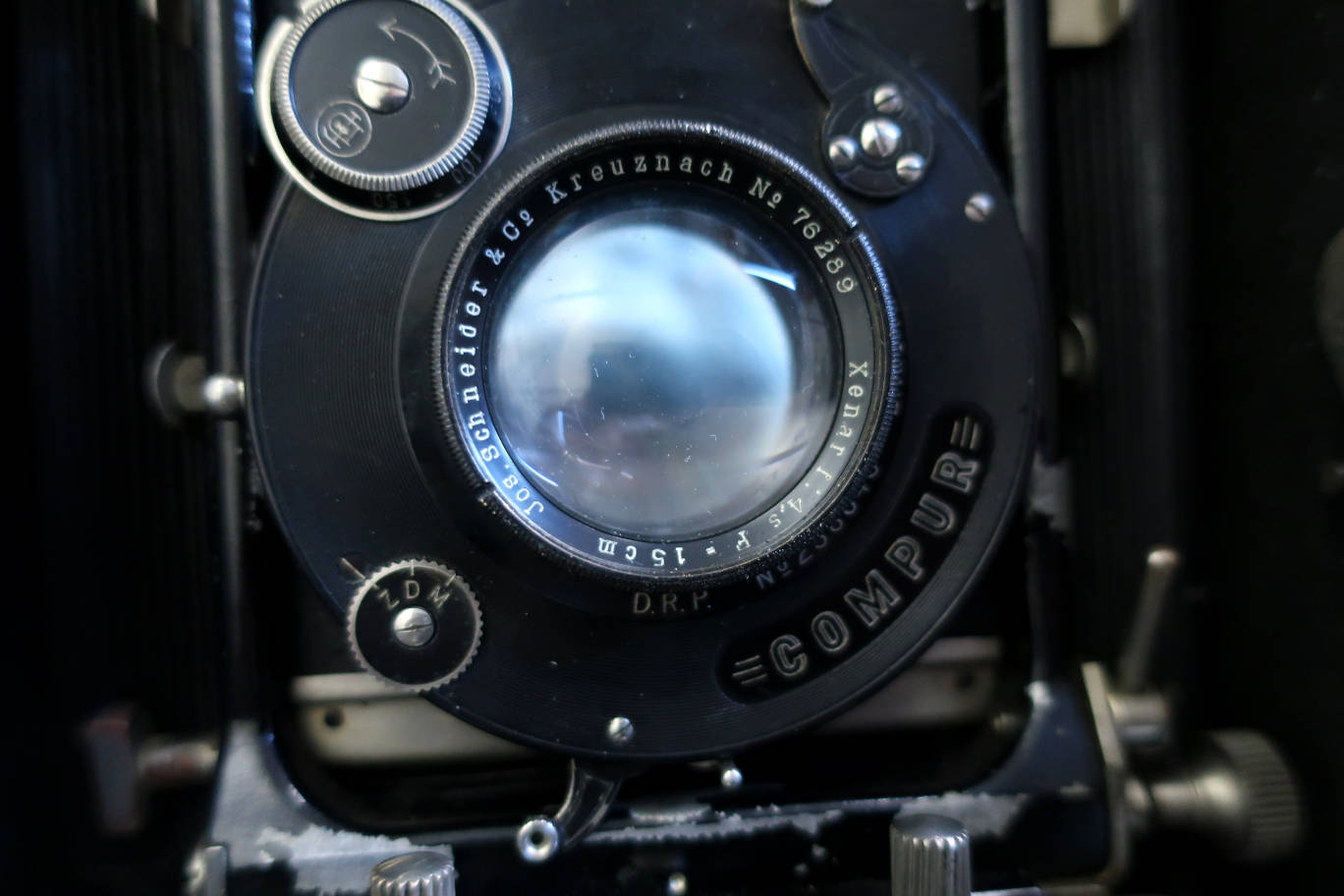
With its standard lens, a Schneider Kreuznach
Xenar 1:4.5/15 cm. According to the serial number it was produced in autumn 1923. So it's a re-used lens.
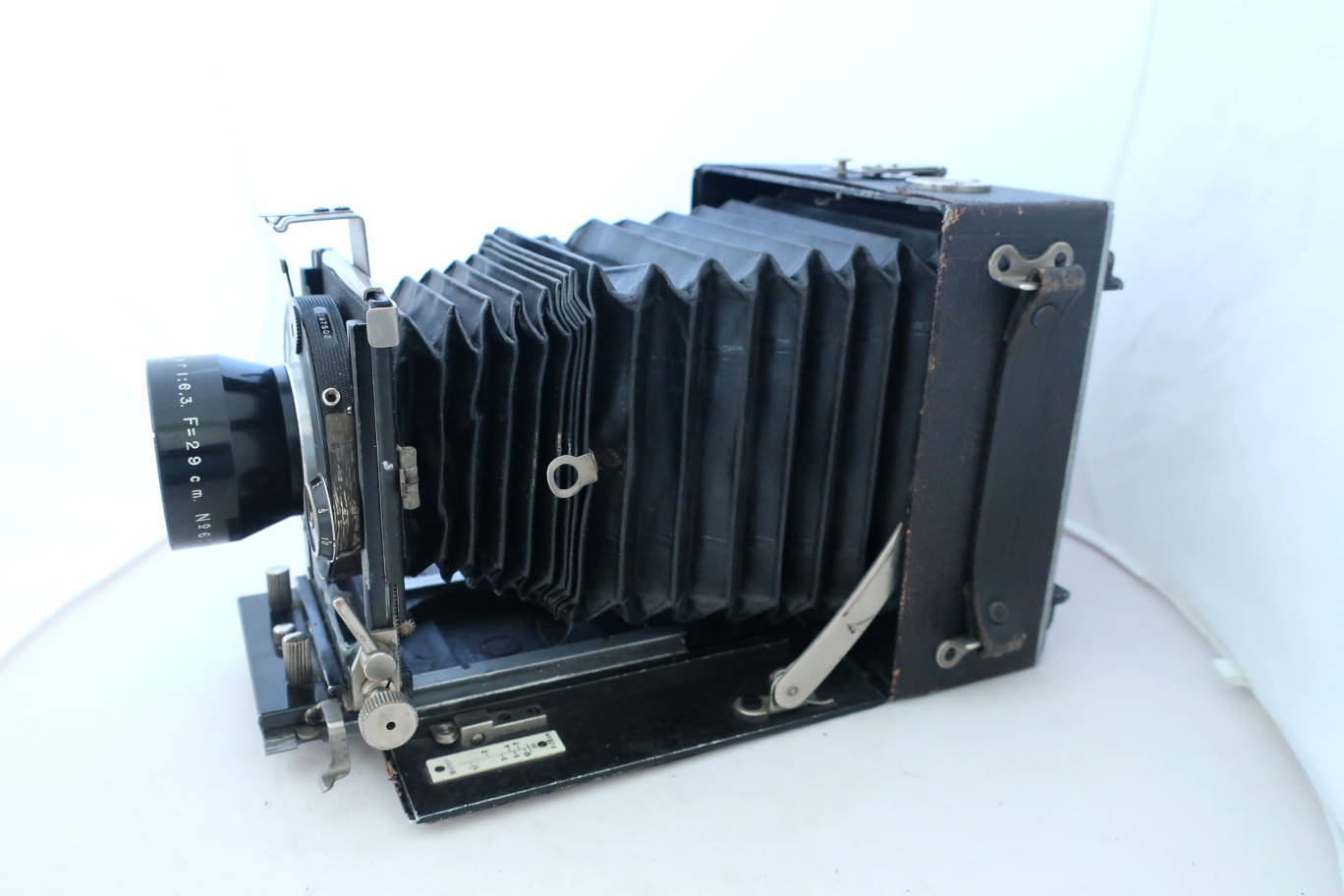
Extended for 290mm. There is room for more.
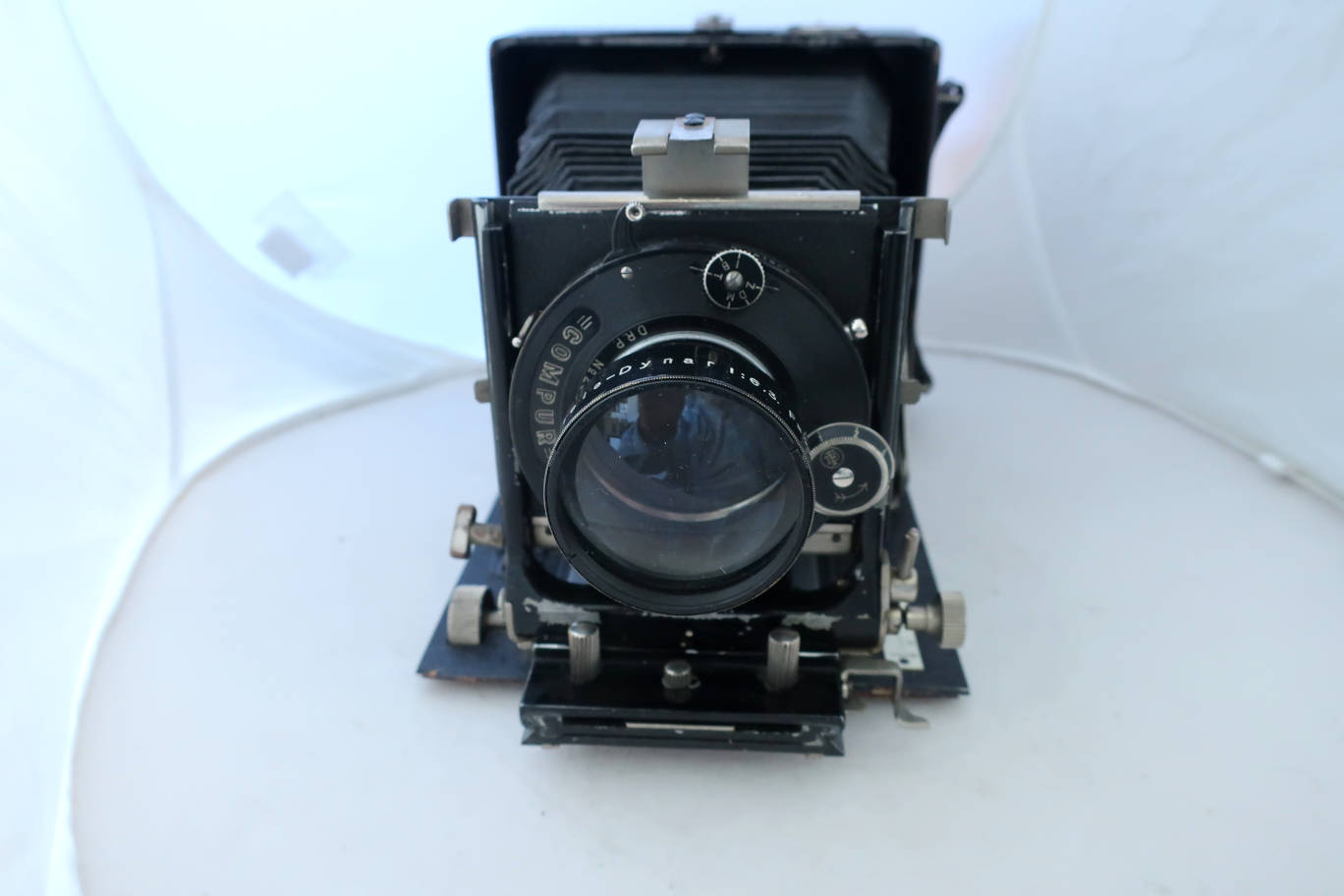
Seen from front.
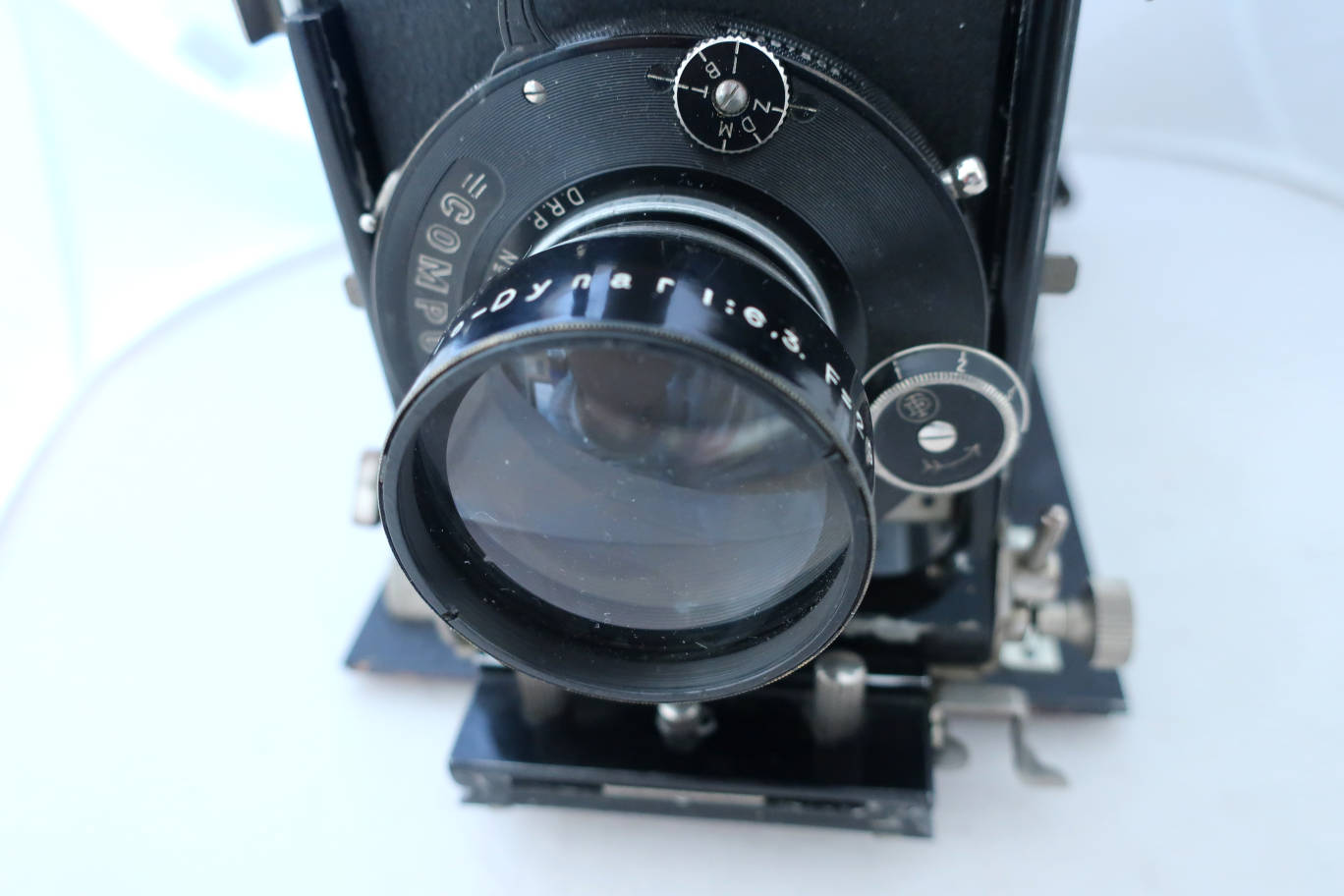
A big tele lens that would not fit into the housing, a Voigtländer Tele-Dynar
1:6.3/29 cm. It dates from 1931. So it's re-used as well.

Triple extension of the bed.
It's a very nice camera,
easy to use. If you can cope with 9x12 format, it's better than most of
the others. It has ample movements. The rotating back is a big advantage.
It's lightweight seen its possibilities.